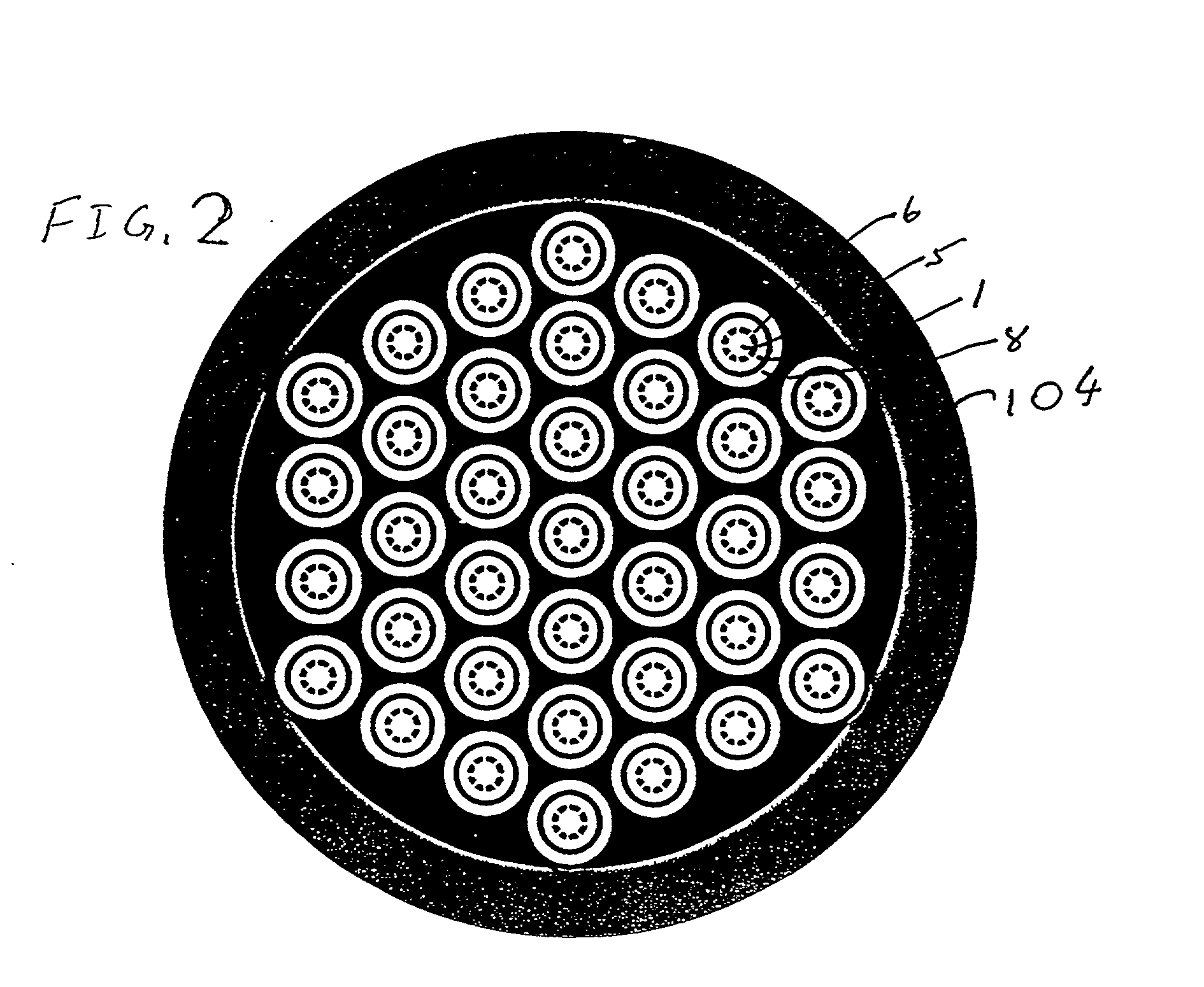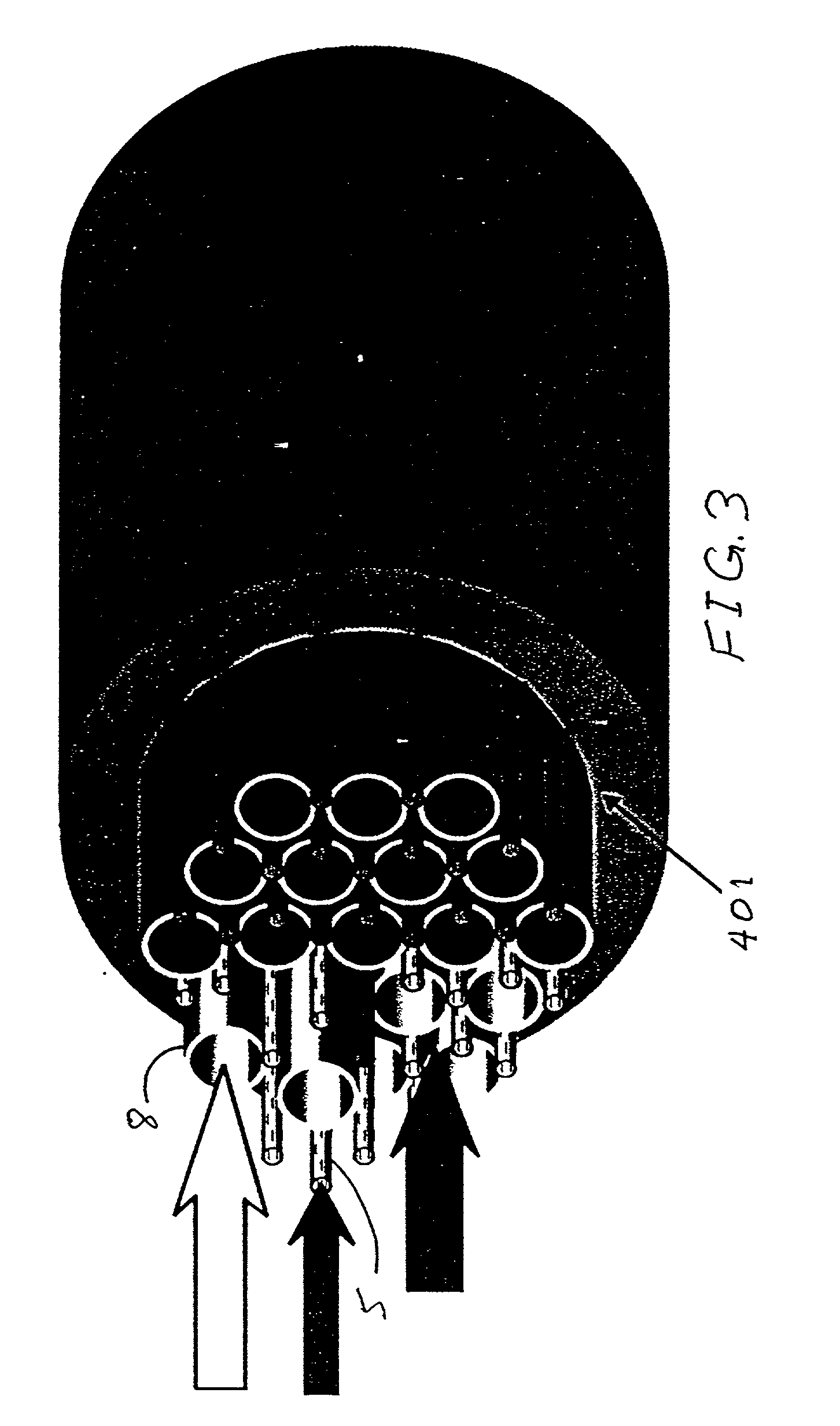Flameless combustor process heater
- Summary
- Abstract
- Description
- Claims
- Application Information
AI Technical Summary
Benefits of technology
Problems solved by technology
Method used
Image
Examples
Embodiment Construction
[0017] The process heater of the present invention eliminates the firebox of a conventional process heater and provides uniform heat flux at a controlled temperature level. The fire box is replaced by, for example, concentric tubes that may be in coils, or straight. Fuel and oxidant is mixed in stages and at a temperature that results in oxidation of the fuel without producing a flame, thus eliminating the flame as a radiant source of high level heat, and replaces the flame with a flowing stream of high temperature level gas. In an endothermic process, this can result in higher temperatures within metallurgical constraints, thus resulting in many processes in improved conversions, selectivities and / or yields and reduced byproduct production. Elimination of irregular temperatures also reduces risk of failures of tubulars due to local hot spots. Radiant efficiency of flameless combustion according to the present invention can also be greater, resulting in lower energy consumption.
[001...
PUM
 Login to View More
Login to View More Abstract
Description
Claims
Application Information
 Login to View More
Login to View More - R&D
- Intellectual Property
- Life Sciences
- Materials
- Tech Scout
- Unparalleled Data Quality
- Higher Quality Content
- 60% Fewer Hallucinations
Browse by: Latest US Patents, China's latest patents, Technical Efficacy Thesaurus, Application Domain, Technology Topic, Popular Technical Reports.
© 2025 PatSnap. All rights reserved.Legal|Privacy policy|Modern Slavery Act Transparency Statement|Sitemap|About US| Contact US: help@patsnap.com



